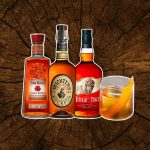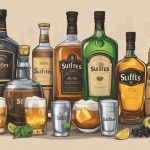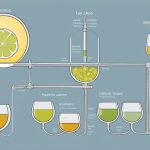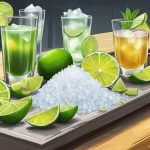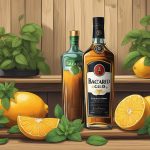Champagne is celebrated for its distinctive sparkle and elegance, encapsulating a range of flavors that reflect its rich heritage and the meticulous process behind its creation. Originating from the Champagne region of France, this iconic sparkling wine is steep in tradition and strict production standards.
What does champagne taste like? A symphony of tastes awaits the palate with each sip of champagne, from citrus to floral, almond, and beyond. The effervescence of champagne is not merely a visual delight but also contributes to its complex taste profile, enhancing the overall sensory experience.

Understanding champagne is to appreciate its variety, as each bottle can tell a different story. The flavor of champagne is influenced by the types of grapes used, the level of sweetness, and the duration of aging. Wine enthusiasts often note the presence of fruit, brioche, creamy or nutty undertones, and varying degrees of acidity.
The aging process amplifies depth and complexity, while the terroir—the unique environment where the grapes are grown—lends its signature notes to the champagne. For the uninitiated and connoisseurs alike, the taste of champagne is a fascinating journey through a landscape of sensory delights.
Key Takeaways
- Champagne offers a complex flavor profile with various notes such as citrus, almond, and floral tones.
- The taste is influenced by grape varieties, sweetness levels, aging, and the specific region it is produced in.
- Champagne’s unique effervescence enhances the tasting experience and adds to its distinction as a sparkling wine.
Table of Contents
Defining Champagne

Champagne, a symbol of celebration and luxury, is exclusively produced within its namesake region in France. It is renowned for its distinct bubbly quality, resulting from unique grapes and the meticulous méthode champenoise.
Champagne Region and History
The Champagne region, nestled in the northeastern part of France, is the only area in the world that can rightfully produce Champagne. This region’s cool climate and chalky soil are ideal for the delicate vines. Historically, Champagne’s roots span back to the Romans, but the wine’s distinctive effervescence was perfected in the 17th century.
The Grapes of Champagne
Three primary grapes emerge as Champagne’s foundation: Chardonnay, Pinot Noir, and Pinot Meunier. These grapes lend their signature to the wine’s flavor:
- Chardonnay: providing brightness and lemony zest
- Pinot Noir: contributing body and depth
- Pinot Meunier: adding fruitiness and aroma
Méthode Champenoise
Referred to as the traditional method, the méthode champenoise involves a secondary fermentation in the bottle. This key process creates Champagne’s effervescence and consists of several steps, including:
- Initial fermentation
- Blending
- Secondary fermentation with added yeasts and sugars
- Aging on the lees to impart richness
- Riddling to consolidate sediment
- Disgorging to remove sediment
- Dosage to adjust sweetness
This rigorous technique is what distinguishes Champagne from other sparkling wines around the world.
Characteristics of Champagne Taste
Champagne offers a symphony of flavors and sensations, distinguished by its flavor profiles, sweetness levels, and the balance between acidity and effervescence.
Flavor Profiles
The taste of Champagne is a complex collection of flavors. It usually encompasses notes of citrus, such as lemon, along with green fruits like apple and pear. Floral nuances are also present, making each sip a multi-layered experience. Almonds, peach, and cherry are commonly detected flavors, which add a nuanced sweetness and depth to the overall profile.
- Citrus: Often a burst of lemon or grapefruit.
- Green Fruit: Apple and pear notes provide freshness.
- Stone Fruit: Peach and cherry contribute natural sweetness.
- Nuts: Almond tones offer a subtle richness.
Sweetness Levels
The sweetness of Champagne ranges from dry to sweet. Labels such as Brut, Sec, and Doux indicate how much sugar has been added after fermentation.
- Brut: Very dry with little to no added sugar.
- Sec: Noticeably sweet, with a moderate sugar content.
- Doux: The sweetest Champagne, often with a rich, sugary taste.
Acidity and Effervescence
Champagne’s signature zing comes from its acidity and effervescence. The tartness adds a mouth-watering sensation, while the fine bubbles create a lively and refreshing mouthfeel.
- Acidity: Balances the sweetness and enhances the overall flavor.
- Effervescence: Delivers a frothy and invigorating texture.
Sensory Experience
When tasting champagne, one’s senses are greeted with a complex combination of aromas, sensations of the bubbles, and the overall balance of flavor and texture.
Aroma and Bouquet
The aroma of champagne greets the nose with a blend where yeast plays a crucial role. As the champagne is made, yeast interacts with the sugars, creating a toasty or brioche-like smell. This aroma can also develop nutty characteristics over time. Distinct aromas are detectable as soon as the cork pops, signaling the beginning of the sensory journey.
Bubbles and Texture
Bubbles are the hallmark of champagne, arising from carbon dioxide trapped during the secondary fermentation process inside the bottle. On the palate, these bubbles release abruptly, creating a texture that can feel either creamily persistent or pleasantly fleeting. The size and persistency of the bubbles contribute to a tactile experience as important as taste.
Balance and Mouthfeel
Mouthfeel refers to the physical sensations in the mouth caused by the wine, including its body and texture. Champagne typically offers a vibrant acidity that balances the richness from the lees, the dead yeast cells, contributing to the wine’s structure. This balance in champagne gives it a rounded, full-bodied feel, which is complemented by the effervescence of the bubbles.
Types of Champagne
Champagne is categorized by taste, style, and the grape harvest year. Each type offers a unique experience and reflects a different production process.
Non-Vintage and Vintage
Non-Vintage Champagne is a blend of grapes from multiple years. This is a common style that aims for a consistent taste profile year after year. Vintage Champagne, on the other hand, is made from grapes all harvested in the same year and is only produced when the quality of the grape harvest is exceptional. Vintage versions typically age longer, contributing to a depth and complexity in flavor.
Rosé and Blanc de Noirs
Rosé Champagne is recognized for its pink hue and is produced either by blending red and white wines or by macerating the skins of red grapes for a short time. It often has notes of red fruits like strawberries and cherries. Blanc de Noirs, translating to ‘white from blacks’, is white Champagne made exclusively from red grapes, pinot noir or pinot meunier, and tends to exhibit a more robust body and deeper flavors.
Brut Nature and Extra Brut
These types of Champagne have little to no added sugar. Brut Nature, also known as zero dosage, has less than 3 grams of residual sugar per liter, offering the purest expression of the Champagne grapes. Extra Brut is slightly less dry than Brut Nature but still has very low sugar content, usually between 0-6 grams per liter, allowing the crispness and true character of the wine to shine through.
Aging and Storage
Champagne’s taste can improve with age if stored correctly, becoming more nuanced and complex. The process of aging on the lees impacts the flavor, and maintaining optimal storage conditions is crucial for preserving its quality.
Aging on the Lees
When champagne ages on the lees, the dead yeast cells, known as “lees,” remain in contact with the wine. This process can last for several years and is essential for developing more intricate flavors. Champagnes, especially from prestige cuvees, are known for their ability to age well thanks to this time spent on the lees, which adds depth to the champagne’s profile.
Optimal Storage Conditions
To maintain a champagne’s quality over time, it should be stored in conditions that support its aging potential:
- Temperature: Consistent, cool temperatures around 45°F to 65°F are recommended.
- Bottle Position: Storing bottles on their side keeps the cork moist, which is vital for a tight seal.
- Light: A darker environment helps prevent degradation.
Correct storage conditions extend a champagne’s lifespan and develop flavors that one wouldn’t find in young bottles. Champagne typically comes in standard bottles, but larger formats like magnums may offer even better aging potential.
Pairing Champagne with Food
Selecting the perfect food to accompany Champagne enhances its flavor and the overall dining experience. Champagne’s versatility allows it to pair well with a variety of dishes, influenced by its sweetness level and style.
Traditional Food Pairings
When they consider traditional food pairings, many people first think of Champagne with oysters or caviar. The natural crispness and slight salinity of Champagne make it an excellent match for these luxurious seafood items. A brut or Blanc de Blancs Champagne complements the delicate flavors of these dishes. Town & Country Magazine suggests the bubbly pairs well with the briny taste of oysters and the subtle richness of caviar.
Another classic pairing is fried chicken with Champagne, especially varieties with a higher acidity that cut through the greasiness of the chicken. The contrast between the crunchy texture of the chicken and the effervescence of the Champagne creates a balance on the palate. Advanced Mixology explains that an elegant glass of Extra Brut or Blanc de Blancs can taste even better when accompanied by roast chicken with herbs and garlic, owing to the complementing flavors and textures.
Champagnes with a higher sweetness level, such as Demi-sec, can harmonize well with desserts like pastries or fruit tarts. The sweetness in both the food and the Champagne enhances the fruity and toasty notes.
The Champagne Production Process
The champagne production process transforms grapes from the vineyard into the sparkling wine that is celebrated around the world. This process involves careful fermentation and specific practices that ensure the formation of champagne’s unique characteristics.
From Vineyard to Bottle
Champagne production begins in the vineyard, where specific grape varieties are carefully cultivated. These grapes, primarily Chardonnay, Pinot Noir, and Pinot Meunier, grow on vines in the Champagne region of France, where the climate and soil add to the wine’s distinct flavor. Once the grapes reach the peak of maturity, they are harvested and pressed. The juice is then placed into containers to start the first stage of fermentation, turning the sugars in the grape juice into alcohol and carbon dioxide.
The Role of Yeast in Fermentation
Yeast plays a crucial role in the fermentation process. It is added to grape juice to initiate the first fermentation, resulting in a base wine. After blending different base wines to achieve a desired flavor profile, the next step is the tirage stage. A mixture of wine, sugar, and yeast, known as the tirage, is added to bottles. The yeast consumes the sugar and produces more alcohol along with carbon dioxide, which gives champagne its bubbles.
Bottles are then sealed and stored horizontally in cellars, allowing the second fermentation to occur. The aging process can last several years, during which time the bottles are turned periodically – an act known as riddling – to consolidate the yeast sediment, called lees, at the neck of the bottle.
Finally, the sediment is removed through a process called disgorgement, where the bottle neck is frozen to trap the sediment, and the cap is removed so the pressure forces the sediment out. The champagne is then topped up with a mixture called dosage, which adjusts its sweetness level, and sealed with a cork. After a little more aging, the champagne is ready to be shared and enjoyed.
Labeling and Selecting Champagne
When choosing a bottle of champagne, the label holds the key to its quality and flavor. Understanding this information can guide one to select a champagne that suits their taste and occasion.
Decoding the Label
A champagne label provides essential details about what’s inside the bottle. The Appellation d’Origine Contrôlée (AOC) label ensures the champagne originates from the specific region in France, guaranteeing its authenticity. Labels also indicate sweetness levels, from “Brut” (dry) to “Doux” (sweet), helping consumers anticipate the taste.
Another critical element is whether the champagne is a Blanc de Blancs, made solely from white grapes like Chardonnay, typically lighter and more citrusy, or a Blanc de Noirs, crafted from red grapes, often richer and more robust.
Choosing Quality Champagne
Quality champagne comes from a careful selection process. Look for established names like Veuve Clicquot to ensure a high level of craftsmanship. Luxury champagnes often boast a balance in alcohol content, complexity, and fine bubbles.
Remember that true champagne can only come from the Champagne region; sparkling wines from other regions are not labeled as such. For those desiring exclusivity, seeking out vintage champagnes—which are made from the grapes of a single year’s harvest—can offer a unique, luxurious experience.
Cultural Significance

Champagne has long been associated with opulence and festivities, symbolizing celebration in many cultures around the world.
Champagne in Celebrations
Champagne is synonymous with celebration. Its iconic pop and fizz signify the start of joyous occasions, from weddings to New Year’s Eve parties. Unlike its cousins, cava from Spain and prosecco from Italy, champagne often carries a reputation for being more prestigious and expensive due to its traditional methods of production and origin in the Champagne region of France.
The taste of champagne itself is also a testament to its celebratory qualities. It is a complex beverage, with flavors that can evoke a sense of luxury and delight. Occasionally, the notes found in champagne—crisp apple, pear, citrus, and subtle hints of toasted bread—complement the festive atmospheres where it is shared.
- Celebration: Champagne is frequently the drink of choice for toasts.
- Expensive: It is often perceived as a more luxurious option among sparkling wines.
- Cava and Prosecco: These are more accessible alternatives with their own unique tastes and traditions, yet champagne holds a special status in the public consciousness.
- Champagne Taste: It is diverse and varies with different blends and aging processes, contributing to the overall experience of celebration.
Champagne’s place at celebrations extends beyond taste, as it is integrally linked to the ritual and tradition of marking important moments with a shared gesture of joy and success.
Frequently Asked Questions

In this section, one will find answers to commonly asked questions about the flavor profile and characteristics of champagne.
What does champagne taste like?
Champagne has a sparkling effervescence, with a highly acidic taste and a light to medium body. Its complex flavors often include citrus, peach, or apple notes balanced by a yeasty, bready character.
Is champagne typically categorized as a sweet beverage?
Champagnes range in sweetness from very dry to sweet. The term “Brut” indicates a dry champagne which is the most common sweetness level, with even “Extra Brut” and “Brut Nature” options featuring less residual sugar.
Can one expect champagne to have a similar taste profile to wine?
Champagne is a type of sparkling wine and shares some flavor characteristics with still wines. However, it can also display a unique taste profile due to the carbonation, winemaking method, and specific grapes used.
What flavor nuances can be detected in a typical champagne?
One can detect a spectrum of flavors in champagne, including hints of almond, brioche, and toasty notes owing to its aging process, alongside fruitiness and slight minerality.
What initial experience might a first-time champagne drinker encounter with its taste?
A first-time drinker might experience a refreshing, crisp initial taste with fine bubbles that leads to the discovery of subtle fruit and nutty flavors, depending on the type of champagne.
How does the bitterness level in champagne compare to other beverages?
Champagne generally exhibits a low to moderate bitterness, often less pronounced than that found in certain beers or teas. The bitterness in champagne can contribute to its overall balance and is typically integrated with its acidity and fruit notes.
